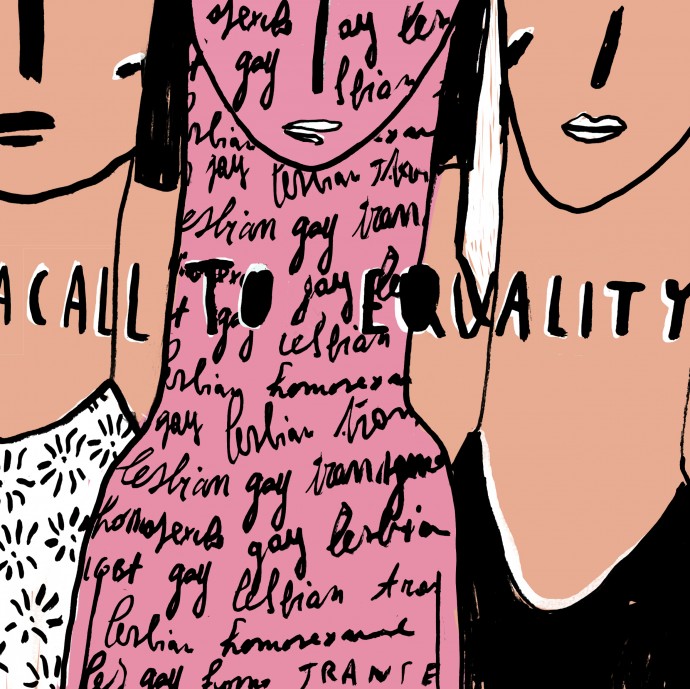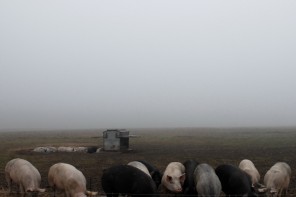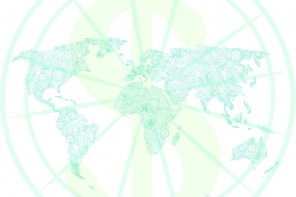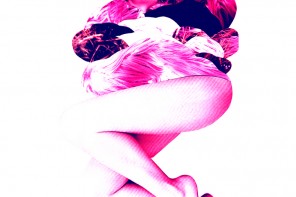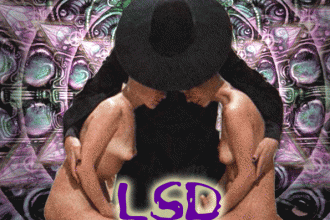Roberta: photographer, performance artist, musician. She bathes herself in oil to protest against the damage it causes the environment. She wraps herself in cellophane covered with the words that society uses to determine sexuality and then proceeds to rip it off. She draws her audience in to games of dismantling and reassembling definitions of gender identity. In short, a woman who identifies contemporary concerns and uses the many faces of art to emphasize the ones that remain obscure in real life.
I’ve always been strongly attracted to art and music. There isn’t a specific moment when this interest started, but rather various different points in time that were decisive in knowledge and practice of the arts while I was growing up. It’s been like a continuous discovery through the methodologies and mixed media. I do what I do for many diverging reasons, but one of the main ones is to develop the instinct of watching and seeing the world with new eyes, trying to feed culture.
I try to make my artwork as multifaceted and versatile as possible and it can be divided roughly into categories: photography, installation, video, sound and performance. I don’t have any preferences when it comes to these artistic disciplines; each one permits me to express myself in different ways and sometimes they collide in one project. Most of my video and photography works are part of art installations. Other performances are combined with audiovisual works to obtain a complete piece.
I probably feel the need to express myself in as many ways as possible because I’ve always admired historical artists who experiment with various mediums, they were always searching for new ways to convey their ideas and I think this process shouldn’t be stopped through generations.
My work particularly concentrates on social and political issues related to gender, sexuality, global warming and environmental pollution, with a specific connection between art and activism.
Basically, the people with their every day stories and cultures—the social and political issues—in relation with contemporary art, this is what inspires me. It’s a deep and aware state of presence for what is happening around me, and what is happening right now. It depends entirely on the work I’m doing at that moment, because sometimes the inspiration just hits when you’re not looking for anything. That’s one of the best moments, actually.
The message of my art and the feelings I wish to evoke from the audience depend on the exhibited or performed work. Right now, for example, I’m doing an extensive work of performances against discrimination on sexual orientation and gender identity. In this case, the message is clear and direct: it’s a call to equality. It’s astounding how our society is full of homophobia, transphobia and discrimination and how your sexual orientation can be punishable by death or otherwise condemned by strict laws and judgments in different countries. What defines a sexual orientation as “legal”? What are the criteria to make this decision? And most of all, why is so important to make this judgment, to define someone’s sexual nature as either lawful or unlawful?
I didn’t think of creating something like this until I started with the performance “They Are Labels. We Are Lovers.” in 2011. From my skin I began to tear off cellophane that bore some of the words that we use to define our sexual orientation or gender identities such as gay, lesbian, bisexual, transgender and straight.
Around that time I made a photography book about the Europride 2011 in Rome, one of the European cities with the highest presence of homophobia and transphobia. This makes Italy a very controversial country, because even though homophobia and transphobia is soaked in to society, it’s one of the top countries of the world for sex traffic of transsexual people. I was impressed by a documentary about the transsexual prostitution and it reveals the high request and liking of MtF (Male to Female) people who haven’t made the sex change surgery yet.
At the same time there is no recognition for homosexual people, couples or individuals.
The video I like Italy but Italy doesn’t like me shos just how simple it is to be acclaimed for wearing a mask and live the others’ lives instead of being yourself. It asks the viewer who really is wearing the mask. Is it me who is invisible, or is it you, watching me? I also created other photo and video works which were displayed by Amnesty International. People of all gender identities or sexual orientation are fighting for LGBT rights in my home country and for the first time we’re seeing some little changes, also due to the influence of the other European countries. If we keep on going this way the change will become real, concrete. Until now, the response that I’ve received from this performance work has been great and I hope it will become greater in the future, because we are living in a time where LGBT rights, especially in Europe, are undergoing profound changes for their recognition.
I can say a few words about the performance of A sound used in speech, which has been part of the Month Of Performance Art with Us Inc’s collaboration in Berlin. It was an awesome experience and it started as a sociological and linguistic play: with the use of 37 wooden letters, I had spelled out words that we use to define our sexual orientations and gender identities. Then I integrated the audience in to the piece, asking them to compose new words and new senses. It’s amazing to discover what came out and here are some examples: I bless sex, bestbian, rage, tags, easy, underneath, blind, real, graight, trandy, single, aight, earn, bear, tight, hurny and more will come. Now I’m collecting as many words as possible and I think it is a good reflection on the terms with which we should define ourselves.
When performing, I just try to feel the movement that I’m focusing on at that precise moment, my body, the other performers’ bodies and the public. All of this could be everything and, in fact, I feel everything within me and around me and it also depends on the specific performance and its actions or the location where it’s taking place. But generally the feeling is one of the most complete experiences for getting a balance with yourself and the other people.
In the past years, my style has definitely evolved. I’ve kept a constant dedication to experiment different artistic disciplines, [thus] increasing my attention to the study and practice of performance art.
If I think about myself from the beginning, I’ve changed a lot of things because of the experimentation with new stimuli. I can’t stand on one single point and just watch the world around me; I’m too curious. Most of the time I need to do more, I need to move either my own body or what surrounds me.
I don’t think it’s useful to concentrate my energies in only one singular way to formulate my thoughts. If I had to work like that I’d probably lose the ability to discover new things.

